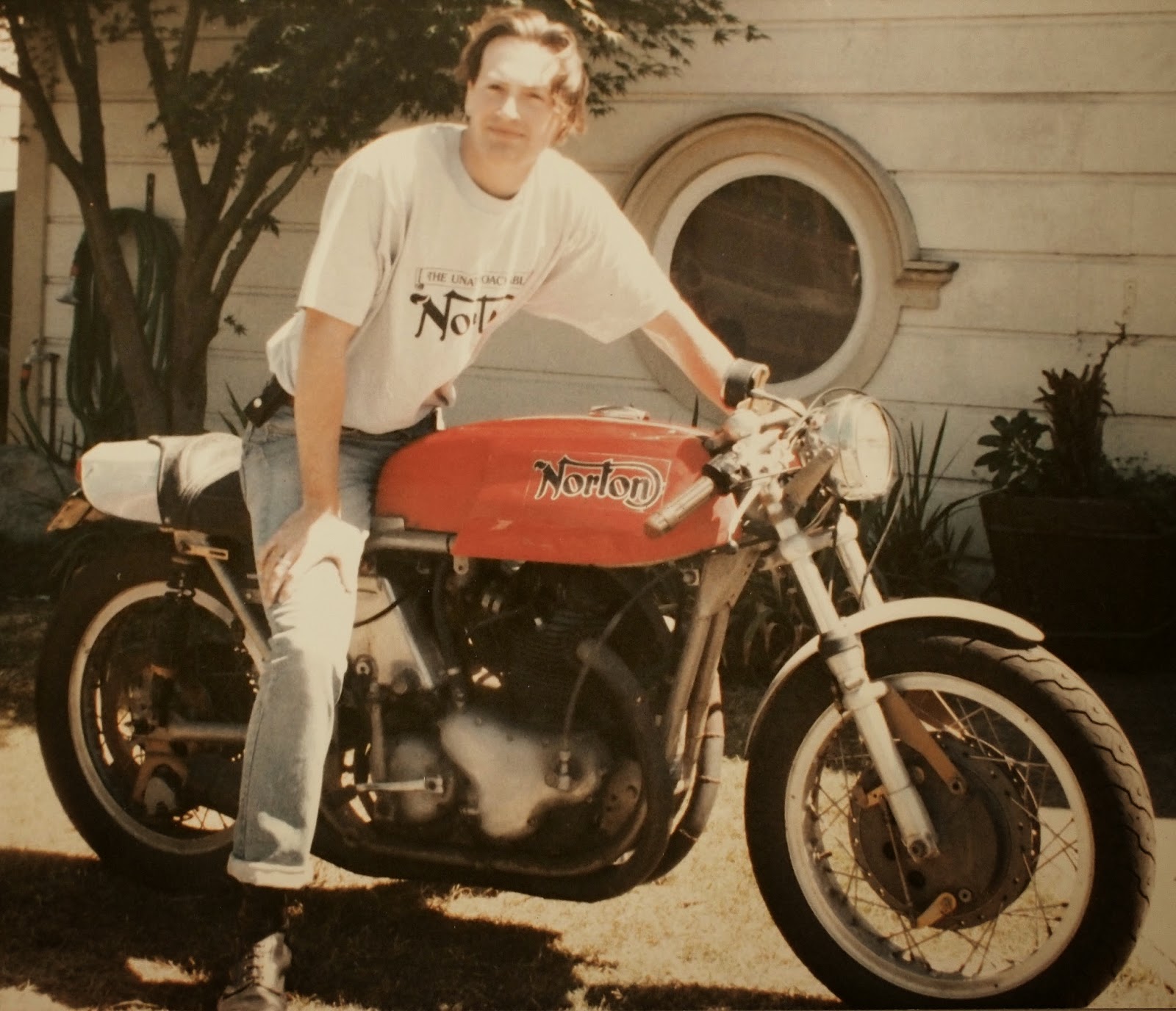Zombie Cycles – They’re For Real
(This article originally appeared as a column in Cycle World magazine)
(This article originally appeared as a column in Cycle World magazine)
 |
| Can the lovely Kate Moss help revive the Matchless brand? Does it matter? |
Shakespeare asked, ‘What’s in a name?’ but in business, an
established brand with emotional resonance is pure gold. It takes time to build a good
reputation, so instead, would-be manufacturers have gone name-shopping in the graveyard.
They’re busting up the crypts of old motorcycle companies, ones we buried
decades ago with cries of lamentation and tales of better days. The new grave robbers are suit-wearing
copyright lawyers with shovels in hand, but they don’t want bones – they’re
negotiating fees to legally chisel business names from the family crypt. Once
in hand, they’re pasted onto a brand new machine, which bears no family
resemblance for the simple reason they aren’t family at all. They’re zombies
and clones.
 |
| What's wrong with this picture? The new prototype Matchless |
Dead motorcycle brands sleep under our soil – thousands of them
since the late 1890s, from every corner of the world. 90% are gone and forgotten, but a few potent
names –Indian, Vincent, Cyclone –
have seen miserable, limping attempts at resurrection. Cyclone was the most technically
advanced American motorcycle of the early 20th
Century, an OHC V-twin 70 years before the V-Rod.
After Cyclone died in 1916, a series of new owners gave it CPR (Cash Promoting
Resuscitation), but it never made it off the slab. I’m sure we’ll see another ‘Cyclone’ soon… zombies aren’t
easy to kill. It’s the same with other powerpacked names like Crocker and
Vincent, but the corpse of Indian has been fluffed, powdered, and electrified
more than any other. But who knows
– Polaris might make it live.
It’s important to distinguish Zombies from Clones. A Clone is a
reproduction of a specific model, long after the factory closed. The practice
began in the 1980s, when demand for new Norton Manx and Matchless G50 parts
reached the point of whole-motorcycle production. Most racing clones are
distinctively marked, and present no real issue to collectors or historians. It
sucks when they’re passed off as genuine by wishful thinkers (Velveteen Rabbit
syndrome), or by outright forgers. Most commonly cloned are American Board
Track racers like Harley-Davidson and Indian ‘8-Valves’, and nowadays these
glittering replicas race over auction podiums, in greater numbers than ever appeared
on racetracks. So anyone who wants
a brakeless, suspensionless, and historyless 8-Valve can own one. Huzzah. Don’t
assume clone equals cheap, though; repro Guzzi V8s, early 4-cylinder Italian GP
racers, and Brough Superior SS100s will set you back six figures. They’re replicated by passionate
enthusiasts, who long for the past…although
their devotion reminds me of Joyce McKinney, the ‘Mormon in chains rapist’ who
cloned her dog in Korea. But they’ve revived some really cool bikes with a rabid post-mortem demand, like Tupac and Notorious B.I.G.
albums. These (nec)romantic flame-bearers
just want to keep the old names alive, sometimes by cloning, and more recently
by zombification.
A Zombie is a dead motorcycle brand that's been revived by an
unrelated business, with a tombstone rubbing glued on the gas tank. Zombies
carry no DNA from the original brand, and typically feature a hypothetical
update of the original machine's lines, inspired by ghostly whispers. Sometimes
it works - witness BMW's spirit-capture of the Austin Mini. Most zombies can’t survive long in the
real world, because mass-producing motorcycles takes massive financial backing
and a serious dose of R&D. The majority remain boutique or bespoke machines
– the undead in fancy finery – or prototypes that elicit genuine horror.
Lately, zombies have starred in transparently cynical attempts to cash in on a
fine old name, by hiding terrifically ugly bikes under junkie-chic supermodels.
The goal is selling gear, not gears: apparel is the real business. Even so, name-robbing
can’t harm old reputations, and the zombies and clones roaming our streets are
just another facet of the bizarro world of contemporary motorcycling. Ask any teenager; the Undead can be fun
and sexy, even if they're Frankenbikes.
 |
| The Horex prototype, which seems to have died on the operating table... |
Revived motorcycle brands:
Brough Superior, Matchless, Ariel, Indian, Horex, Norton,
Bultaco, Crocker, Ossa, Hesketh, Benelli, Paton, etc…
(copyright 2015 Paul d'Orléans)






















